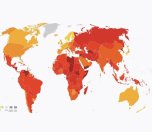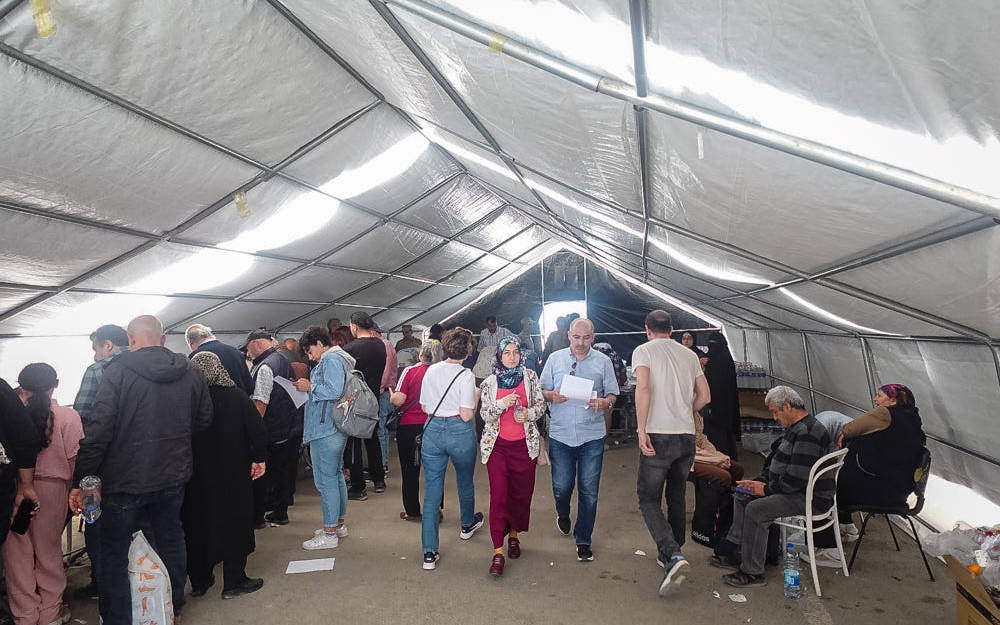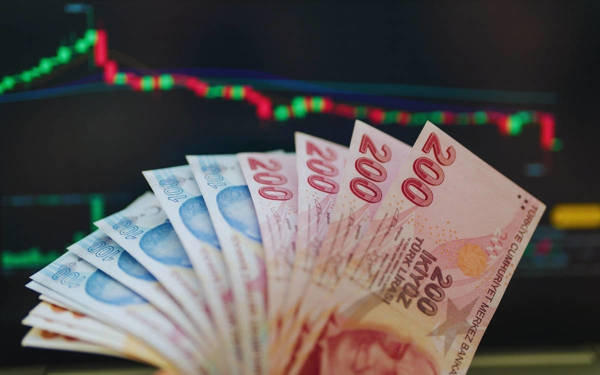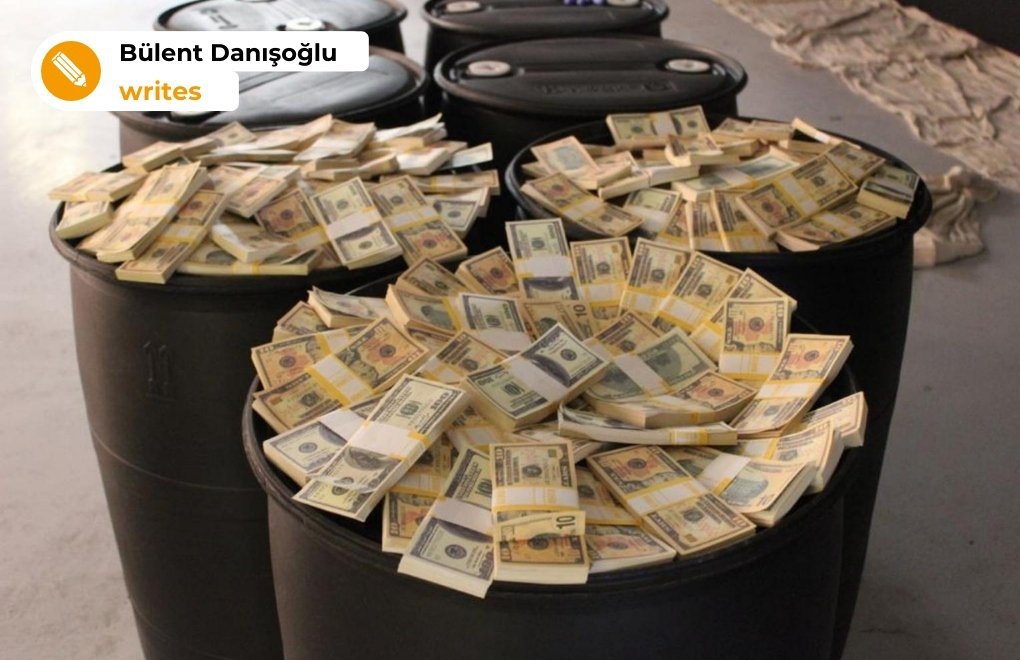From the protests in London (Photo: AA)
Click to read the article in Turkish
It has been 43 years. We were following the Iranian revolution with excitement. Türkiye was not a democratic country in those years either but nevertheless every evening the state television was broadcasting all demonstrations and clashes.
There are again demonstrations and clashes every day [in Iran] but we cannot see them on television. Those who are very interested are following developments on social media.
I would say that Iran was not seen as a country that was very different from Türkiye. There were many students from Iran in Türkiye, they were similar people who were talking about similar problems. Now Iran is seen as further away, even as a country that is irrelevant to us. But in fact, it is important to know about Iran, there are many similarities between the two countries.
The most practical way to understand the socio-economic structure of Iran will be to compare the situation in Iran with the data in Türkiye. Evaluating both similarities and differences may make it easier for us to understand Iran.
Similar economy, similar injustice
The population of Iran and that of Türkiye are almost the same. However, it is difficult to compare the economies of the two countries. International institutions calculate the national income of Iran very differently from one another. The differences are not by a close margin, they are several-fold. For instance, the national income of Iran is 1.9 trillion dollars according to the International Money Fund (IMF), 230 billion dollars according to the World Bank, and 950 billion dollars according to the United Nations (UN).
It is not possible to compare these figures with the national income of Türkiye which is around 850 billion dollars. With these calculations, the per capita income in Iran ranges between 3 thousand dollars to 23 thousand dollars. Therefore using an indicator other than per capita income will be more appropriate. The average monthly wage after taxes is 390 dollars in Iran, and 320 dollars in Türkiye.
The distribution of income is very unequal in both countries. The Gini coefficient showing the inequality of income is 40 in Iran. In Türkiye it is a little worse, it has reached 42. Inequality in the distribution of income has accelerated in both countries after 2013.
The richest 1 percent of the population is receiving 18 percent of the income in Iran. In Türkiye, this figure is 19 percent. The richest 10 percent of the population is receiving 52 percent of the income in Iran, and 53 percent in Türkiye. Only 13 percent is left for the poorest 50 percent of the population in Iran, and 14 percent in Türkiye.
The sectoral distribution of production is also showing similarities. The share of agriculture within the Gross Domestic Product (GDP) is around 7 percent in both countries. Industry and construction amount to 35 percent in Iran, and about 32 percent in Türkiye. Services amount to 55 percent in Iran and 60 percent in Türkiye.
These similarities are also reflected in employment. Agricultural employment is 16 percent in Iran, and 17 percent in Türkiye. Employment in industry and construction is around 35 percent in Iran and around 28 percent in Türkiye. Unemployment is around 11 percent in both countries.
Of course, we do not know how dependable the Iranian statistics are compared to the Turkish Statistical Institute (TÜİK).
Production in oil, petrochemistry, steel, copper products, automotive, electric household appliances, telecommunications, paper, rubber, medicine, food, and textile sectors is important in the Iran industry. The defense industry is developed. Iran is selling weapons to 57 countries among which are NATO members. It is mentioned as the country that is using robots the most in the industry in West Asia.
The foreign trade volume of Iran is one-third of that of Türkiye due to the embargo. However, Iran's exports are nearly double its imports. However, Iran's debt is also nearly double the debt of Türkiye.
The inflation rate is around 80 percent in Türkiye and 50 percent in Iran. However, it can be said that the prices in Türkiye are lower, especially after the Turkish lira (TL) devalued so much. While 4.1 dollars is sufficient for the food needed for one person, it is necessary to spend 5.2 dollars for the same in Iran.
Unresolved social problems
Military expenditures of the two countries are also similar, approximately 20 billion dollars. Turkey comes 13th and Iran comes 14th in the military power ranking prepared in 2022 using 50 indicators. And in the ranking of peaceful countries prepared by the Institute of Economy and Peace in Australia using 23 indicators, both countries are in the lowest ranks, Iran is the 141st and Türkiye the 145th.
We can also say that the social indicators are similar. The population of Iran is increasing by 1.1 percent in a year and the population of Türkiye 1.1 percent. 75 percent of the population is living in cities in both countries. Life expectancy at birth is 74 in Iran and 76 in Türkiye.
The indicators for education look slightly better in Iran. People living in Türkiye are receiving on average 8.6 years of education, while the average education period is 10.6 years in Iran. While there are two universities from Iran within the top 500 universities of the world, no university from Türkiye is in this group anymore. Whereas there have been periods in the past when five universities from Türkiye were on this list.
While talking about education we have to note another indicator which is a little embarrassing. In Türkiye women are receiving 1.5 years less education. However, in Iran the average education period for women and men is equal. And the ratio of women in the parliament is 17 percent in Türkiye, while 26 percent in Iran.
It appears that fraud is more widespread in Iran than in Türkiye. According to the Corruption Perception Index prepared by Transparency International Türkiye is the 96th among 180 countries with 38 points, while Iran is 150th with 25 points. Both countries are below the world average of 43 points.
The situation in Türkiye is worse with regard to the indicators of violence. 2.40 murders take place within a population of 100 thousand, while 2.19 in Iran. 349 people out of every 100 thousand are in prison in Türkiye while in Iran this figure is 228. These indicators are high in both countries.
Points of intersection in history
Although the histories of Türkiye and Iran are very different, it is also possible to find some similarities. For example, constitutionalist movements gained pace in both countries under the influence of the 1905 revolution in Czarist Russia at the beginning of the twentieth century. In 1908 in the Ottoman, the uprising of a group of fearless soldiers was enough for the sultan known for his cowardice to submit.
Whereas in Iran there had been a long period of struggle for a constitution two years before the Ottoman in 1906, led by the ulema, the merchants and the notables. Here the state forces reacted forcefully, there were crashes all around the country and thousands of people who did not surrender had taken refuge in the courtyard of the British Embassy. At that time the mullahs were among those taking refuge at the British Embassy but now the mullahs are blaming the youth as agents of the US and GB, how should we see this?
Another similar period in the history of the two countries was about forty years ago. The US project to create a 'green belt' made up of Islamist administrations around the Soviet Union in order to undermine it was in place.
In Türkiye it turned out to be the Armed Forces (TSK) implementing the project. The soldiers suppressed all left movements in the country with the most brutal methods after the military coup in 1980 in order to make the people religious and submissive. They helped religionists to come to the forefront everywhere in the country. What should we say about the retired generals not allowing anybody to speak ill of the 12th of September coup who now complain about religionists?
One year before Türkiye, in 1979 there was another revolution in Iran. A struggle was waged led by the mullahs and in which almost all political movements participated. The state forces resisted for a long time but then they had to surrender or participate in the insurgents. An Islamic rule was established in Iran.
There is again a strong movement that is shaking the country in Iran. Nobody can know where it will go but movements in Iran cause deep influences on the whole region. The slogan "Zen zendegi azadi" (Women, life, freedom) is undoubtedly being heard in all countries in the region.
In Türkiye there is widespread indifference -even a little undervaluing- towards the surrounding countries. Lately, a statement attributed to ibn Khaldun, that "geography is your fate" is being repeatedly used and very casually. Yes, maybe in the 14th century, but in the 21st century geography is not fate. Even so in this region, all mass movements affect each other and all states act checking one another. (BD/SD/PE/VK)





.jpg)

sa.jpg)


.jpg)
.jpg)
